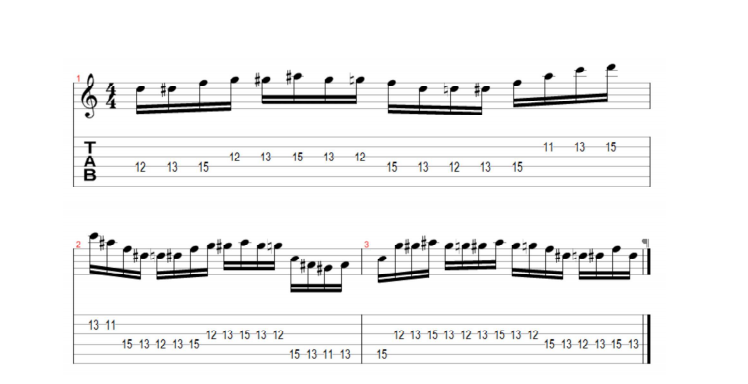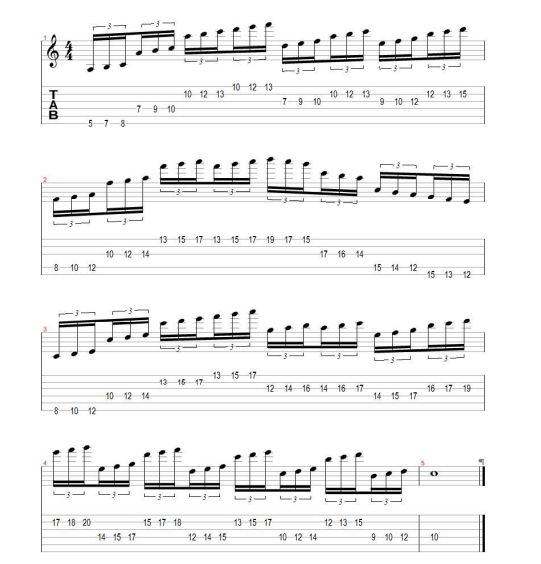To go into more depth about String Skipping, here is an article about it!
String Skipping
By Zack Uidl
String skipping is a great way to improve your technique. And, the great thing about it is that when practicing it, you will be doing many things that will help you reach your technical goals.
String Skipping helps with your picking efficiency, tightens up your two hands to work together more effectively, and also will make you more comfortable with the scales and modes that you are using while string skipping. As you become more comfortable with string skipping, all other techniques will improve as well. Since your hands are working more efficiently together, things like sweep picking will be much easier to accomplish.

Example one
This first example is based on the C Major scale. Looking at the notation, you can immediately notice that it is heavily focused on the 4 string and the pattern is basically the same thing for each new high note that is added in.
For each individual high note, for example on the 9″ fret on the 3 string, the 10″ fret on the 3% string, and the 10″ fret on the 2™ string, you will want to use your index finger for all of them. This may seem counterproductive as it may seem that it is better to use multiple fingers. In many situations, this is true, but in this situation, it is more efficient to use one finger. It helps build a physical consistency throughout the entire exercise which helps your playing faster.

Example 2
This example uses some position shifts. When playing the 4″ and 3 strings it focuses around the 12″ fret as a starting point while on the 2™ and 5″ strings it focuses around 11″ fret as a starting point. This will help your ability to use multiple fingerings and make position shifts.
When performing this example, be sure that you only have one finger on the fretboard at a time. This is very important. Your ability to perform this exercise, and exercises like it, efficiently is heavily dependent on this. You will only be able to play it as fast as you can transition your fingers to the next string you have to play. If you leave your fingers planted after you have played the note already, it will not allow you to set yourself up for the transition to the next string.

Example 3
This example is rather difficult. When looking at it, it can be rather intimidating due to all the transitions and position shifts. In order to successfully be able to perform this, you must take advantage of preparing yourself for each transition.
The first thing that will make it easier is to take note of each scale or mode shape that is being used. Recognizing this will allow your thoughts to be more on the transitions and shifts rather than thinking of each individual note. It will make it much easier for you to master it in a shorter period of time.
Also, you will want to practice each section in isolation before combining them. This allows you to truly get familiar with and understand what is going on. You could break things up measure by measure, which would be easiest, or in other ways such as every two measures.
Practicing string skipping will result in you unlocking doors that previously were locked due to your technical restrictions with your guitar playing. It will advance both your technical progress as well as your creative possibilities. Who doesn’t want to have both of those things advancing at the exact same time?